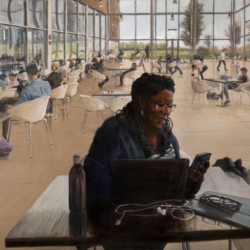To provide the best experiences, we use technologies like cookies to store and/or access device information. Consenting to these technologies will allow us to process data such as browsing behaviour or unique IDs on this site. Not consenting or withdrawing consent, may adversely affect certain features and functions.
The technical storage or access is strictly necessary for the legitimate purpose of enabling the use of a specific service explicitly requested by the subscriber or user, or for the sole purpose of carrying out the transmission of a communication over an electronic communications network.
The technical storage or access is necessary for the legitimate purpose of storing preferences that are not requested by the subscriber or user.
The technical storage or access that is used exclusively for statistical purposes.
The technical storage or access that is used exclusively for anonymous statistical purposes. Without a subpoena, voluntary compliance on the part of your Internet Service Provider, or additional records from a third party, information stored or retrieved for this purpose alone cannot usually be used to identify you.
The technical storage or access is required to create user profiles to send advertising, or to track the user on a website or across several websites for similar marketing purposes.
 We have taken the editorial decision to ignore the tedious, endless toing and froing between so-called return to office mandates and remote work. As much as we can, anyway. It doesn’t appear to be going anywhere and it is driven by two noisily motivated factions who seem unable or unwilling to shift their position by the smallest amount. It is a very 21st Century conversation. (more…)
We have taken the editorial decision to ignore the tedious, endless toing and froing between so-called return to office mandates and remote work. As much as we can, anyway. It doesn’t appear to be going anywhere and it is driven by two noisily motivated factions who seem unable or unwilling to shift their position by the smallest amount. It is a very 21st Century conversation. (more…)


































March 20, 2024
Reviving flexible workspaces – a guide to saving failing operations
by Calum Russell • Comment, Property